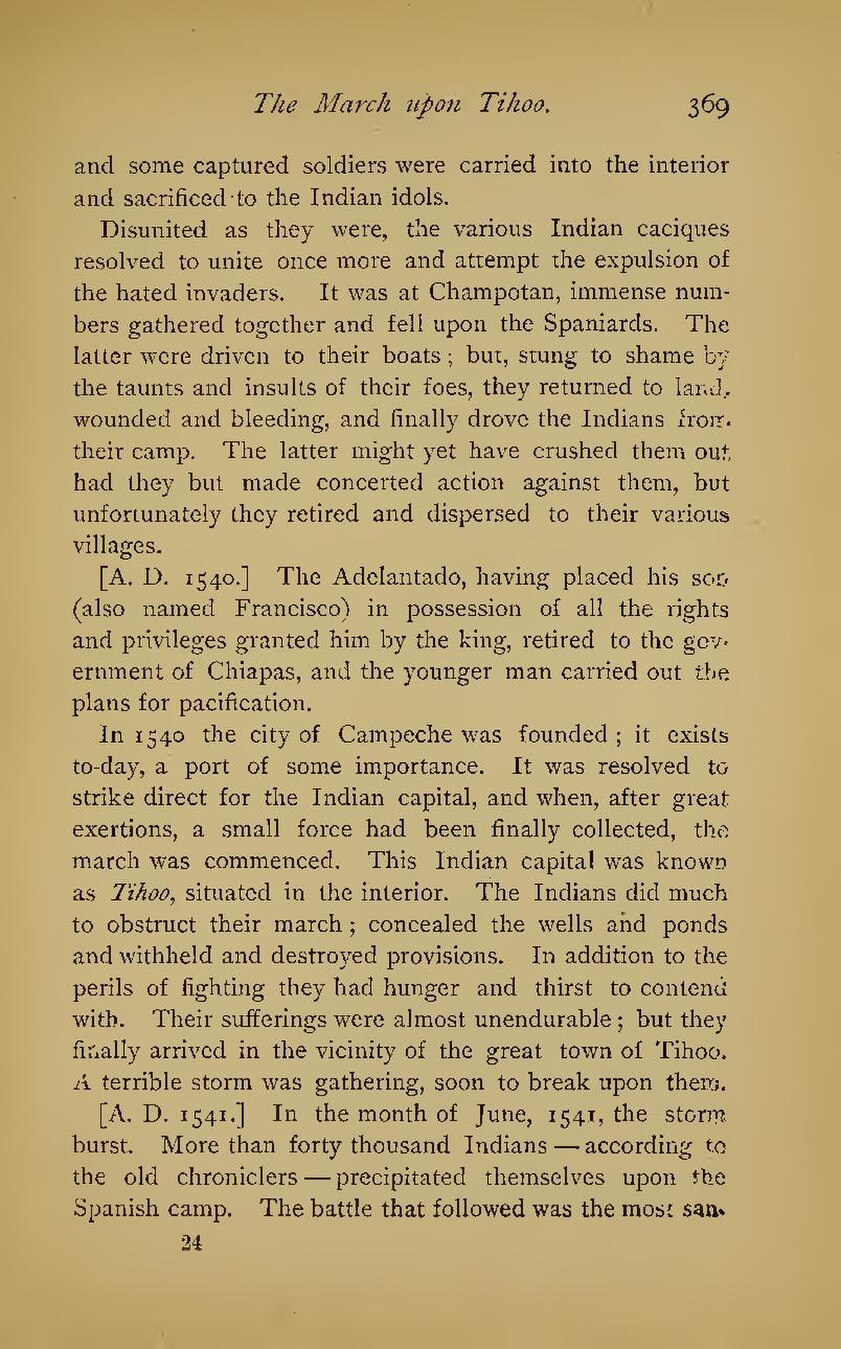and some captured soldiers were carried into the interior and sacrificed to the Indian idols.
Disunited as they were, the various Indian caciques resolved to unite once more and attempt the expulsion of the hated invaders. It was at Champotón, immense numbers gathered together and fell upon the Spaniards. The latter were driven to their boats; but, stung to shame by the taunts and insults of their foes, they returned to land, wounded and bleeding, and finally drove the Indians from their camp. The latter might yet have crushed them out, had they but made concerted action against them, but unfortunately they retired and dispersed to their various villages.
[A. D. 1540.] The Adelantado, having placed his son (also named Francisco) in possession of all the rights and privileges granted him by the king, retired to the government of Chiapas, and the younger man carried out the plans for pacification.
In 1540 the city of Campeche was founded; it exists to-day, a port of some importance. It was resolved to strike direct for the Indian capital, and when, after great exertions, a small force had been finally collected, the march was commenced. This Indian capital was known as Tihoo, situated in the interior. The Indians did much to obstruct their march; concealed the wells and ponds and withheld and destroyed provisions. In addition to the perils of fighting they had hunger and thirst to contend with. Their sufferings were almost unendurable; but they finally arrived in the vicinity of the great town of Tihoo. A terrible storm was gathering, soon to break upon them.
[A. D. 1541.] In the month of June, 1541, the storm burst. More than forty thousand Indians—according to the old chroniclers—precipitated themselves upon the Spanish camp. The battle that followed was the most san-
